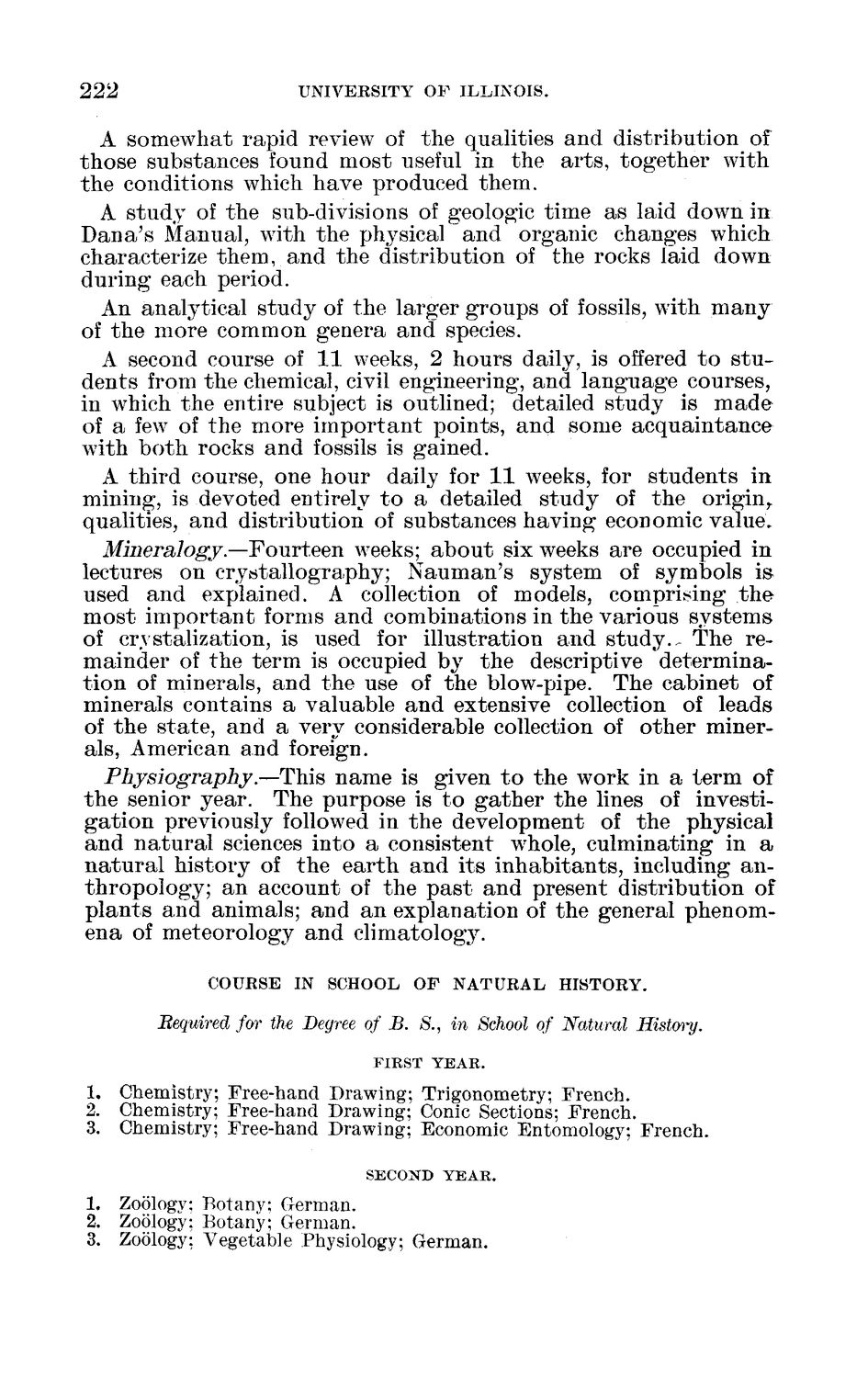| |
| |
Caption: Board of Trustees Minutes - 1890
This is a reduced-resolution page image for fast online browsing.

EXTRACTED TEXT FROM PAGE:
222 UNIVERSITY OF ILLINOIS. A somewhat rapid review of the qualities and distribution of those substances found most useful in the arts, together with the conditions which have produced them. A study of the sub-divisions of geologic time as laid down in Dana's Manual, with the physical and organic changes which characterize them, and the distribution of the rocks laid down during each period. An analytical study of the larger groups of fossils, with many of the more common genera and species. A second course of 11 weeks, 2 hours daily, is offered to students from the chemical, civil engineering, and language courses, in which the entire subject is outlined; detailed study is made of a few of the more important points, and some acquaintance with both rocks and fossils is gained. A third course, one hour daily for 11 weeks, for students in mining, is devoted entirely to a detailed study of the origin r qualities, and distribution of substances having economic value. Mineralogy.—Fourteen weeks; about six weeks are occupied in lectures on crystallography; Nauman's system of symbols is used and explained. A collection of models, comprising the most important forms and combinations in the various systems of crystalization, is used for illustration and study.. The remainder of the term is occupied by the descriptive determination of minerals, and the use of the blow-pipe. The cabinet of minerals contains a valuable and extensive collection of leads of the state, and a very considerable collection of other minerals, American and foreign. Physiography.—This name is given to the work in a term of the senior year. The purpose is to gather the lines of investigation previously followed in the development of the physical and natural sciences into a consistent whole, culminating in a natural history of the earth and its inhabitants, including anthropology; an account of the past and present distribution of plants and animals; and an explanation of the general phenomena of meteorology and climatology. COURSE IN SCHOOL O F NATURAL HISTORY. Bequired for the Degree of B. &, in School of Natural History. FIRST YEAR. 1. Chemistry; Free-hand Drawing; Trigonometry; French. 2. Chemistry; Free-hand Drawing; Conic Sections; French. 3. Chemistry; Free-hand Drawing; Economic Entomology; French. SECOXD YEAR. 1. Zoology; Botany; German. 2. Zoology; Botany; German. 3. Zoology; Vegetable Physiology; German.
| |